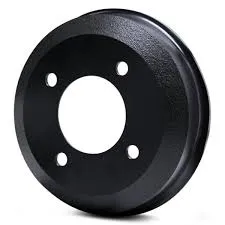Understanding DOT Brake Drum Standards and Compliance for Safe Vehicle Performance
Understanding DOT Brake Drum Requirements A Comprehensive Guide
The Department of Transportation (DOT) has established stringent guidelines to ensure the safety and performance of brake systems across various types of vehicles. One critical component of this system is the brake drum, which plays a crucial role in the braking mechanism of many vehicles, particularly heavy-duty trucks and trailers. This article explores the essential DOT brake drum requirements, their significance, and what vehicle operators and manufacturers should know.
The Basics of Brake Drums
Before diving into the DOT requirements, it’s vital to understand what brake drums are and how they function. Brake drums are circular metal components that house brake shoes and work in concert with hydraulic systems to slow down or stop a vehicle. When the brake pedal is pressed, hydraulic fluid activates the brake shoes, which expand and press against the inner surface of the drum, creating friction that slows the wheel's rotation.
Why DOT Regulations Matter
The performance of brake drums is crucial for road safety. As they are integral to the braking system, their failure can lead to catastrophic accidents. Recognizing this, the DOT has crafted specific requirements to ensure brake drums provide reliable performance under varied conditions. These guidelines encompass manufacturing processes, material specifications, and testing protocols.
Key DOT Brake Drum Requirements
1. Manufacturing Standards According to DOT regulations, all brake drums must be fabricated using materials that can withstand high temperatures and resist wear. The use of high-quality cast iron or advanced composite materials is encouraged to enhance durability and performance.
2. Dimensional Specifications DOT specifies precise dimensions for brake drums, including diameter, width, and thickness. These specifications must be strictly adhered to, as they affect the overall effectiveness of the braking system. Properly dimensioned drums ensure optimal contact with the brake shoes, leading to improved stopping power.
dot brake drum requirements

3. Heat Dissipation Brake drums must be designed to dissipate heat effectively. During braking, the friction generated can cause significant heat buildup. DOT requirements include testing for thermal stability to ensure that drums can withstand the high temperatures encountered during heavy braking without warping or cracking.
4. Load Capacity Different vehicles have varying load requirements, and brake drums must be capable of handling these demands. The DOT mandates testing to determine the load capacity of each drum, ensuring that it can perform reliably under the maximum expected weight conditions.
5. Inspection and Maintenance Regular inspection and maintenance are vital components of safety. DOT guidelines require that operators routinely check brake drums for signs of wear, warping, and other defects. This proactive approach helps identify issues before they lead to brake failure.
6. Certification and Compliance Manufacturers of brake drums must comply with DOT regulations and undergo a certification process to ensure that their products meet safety standards. This compliance is reflected in labeling, with certified drums bearing a DOT stamp, indicating they have passed rigorous testing and evaluation.
Implications for Vehicle Operators
For vehicle operators, understanding DOT brake drum requirements is essential for ensuring safety and compliance. Operators should be aware of the specifications applicable to their specific vehicles and ensure that any replacement brake drums are compliant with DOT standards. Neglecting these standards can result not only in safety risks but also in potential legal consequences should an accident occur.
Conclusion
In conclusion, the DOT brake drum requirements are vital for ensuring the safety and efficiency of braking systems in various vehicles. These regulations protect not only the vehicle operators but also other road users. By adhering to these guidelines, manufacturers and operators contribute to a safer driving environment. Continuous education regarding these requirements is essential, as it empowers everyone involved in the transport industry to make informed decisions about their equipment and maintenance practices.
-
The Power and Reliability of Brake DrumsЯңалыкларAug.27,2025
-
The High-Quality Truck Brake DrumsЯңалыкларAug.27,2025
-
Quality Brake Drums for Reliable PerformanceЯңалыкларAug.27,2025
-
Get the Quality Semi Trailer Brake Drums for Your FleetЯңалыкларAug.27,2025
-
Everything You Need to Know About Brake DrumsЯңалыкларAug.27,2025
-
Enhance Your Vehicle's Performance with Reliable Brake DrumsЯңалыкларAug.27,2025
-
Truck Drum Brake Spring Replacement ProcedureЯңалыкларAug.22,2025


